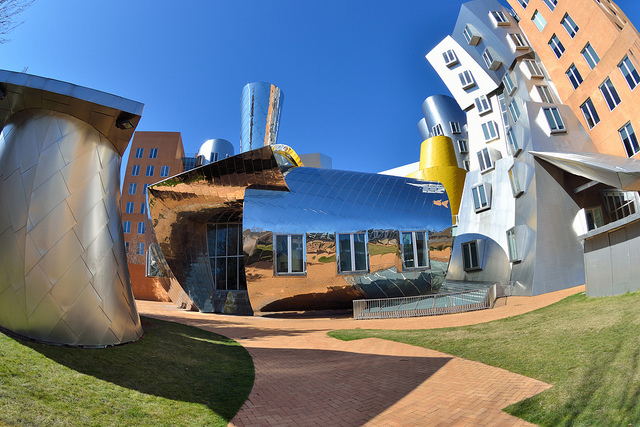Today, organizations understand the important synergy between physical space, work, and culture. Physical space proves pivotal in supporting the work of faculty and students. In this post, I want to share an excerpt from an article that appeared in Planning for Higher Education. I co-authored it a few years ago with my colleague, Karri Holley. The article explores how research universities plan for interdisciplinary work. This section describes how space, work, and organizational culture interact with one another and how this can prove useful in fulfilling the mission of higher education.

Research on the social ecology of college and university campuses has focused on the relationship between the physical, structural, and social environment, and human behavior (Boyer 1987; Griffith 1994; Strange and Banning 2000). This relationship acknowledges the influence of physical and social space on individuals as well as the influence of people on the environment.
In higher education, the responsibility for planning such space to maximize student learning, faculty research, and other priorities is held by the institution. Such responsibility is grounded in the key components of human space as identified by Strange and Banning (2000): the physical condition and layout of the campus, the characteristics and perceptions of those people within the environment, and the organizational structure that provides order to the space.
The environment conveys symbolic messages to its inhabitants, such as the value given to a department or a research topic. Other messages may communicate a sense of belonging to the campus community–sitting areas near the student lounge that invite students to study or socialize together, for example.
Consideration of university space reveals the dominant cultures and subcultures that organize the institutional environment. Among these cultures are the academic disciplines, which occupy space in specific institutional structures and campus locations.
Deliberate and planned change is required on behalf of the institution and its stakeholders to foster interdisciplinary activity (Brint 2005). Universities respond to challenges in a manner influenced by institutional resources, history, and culture (Kezar and Eckel 2002).
Organizational culture is a particularly significant factor in terms of institutional response to innovative opportunities. Defined through a clear sense of mission and purpose, a strong organizational culture offers a sense of identity, commitment, stability, and authority for those who are a part of the institution (Toma, Dubrow, and Hartley 2005).
The culture reflects the beliefs and practices prioritized by the organizational members. Cultural symbols, including the physical setting, provide a foundation for the university. These symbols represent the underlying values and expectations of organizational life.
A strong culture that orients members to the institutional purpose and goals does not simply emerge. Rather, a strong culture is constructed through the deliberate use of mission statements, planning processes, physical facilities, and strategic opportunities.
The university is not defined by a single, monolithic culture. Faculty and students instead engage in multiple subcultures fostered within the institutional environment. For example, the discipline serves as a form of culture that helps a group of participants make sense of the university. By defining the institution’s physical space as a symbolic component of the organizational culture, the importance of space becomes clear.
Universities use their campuses to convey a sense of distinctiveness, history, and tradition. For example, a sweeping campus quad or libraries centered at the heart of campus are common physical characteristics expected of the American university.
Campus buildings serve as cultural symbols and give meaning to the sense of place and purpose that defines the institution. Space serves to embody the institution and what it means to its constituents (Low and Lawrence-Zuniga 2003). Ultimately, space is a nonverbal message that provides order to the institutional culture (Rapoport 2005).
Because of their significance as cultural symbols, the attention given to architecture and campus space should be purposeful, well-planned, and designed to further the institutional mission.

